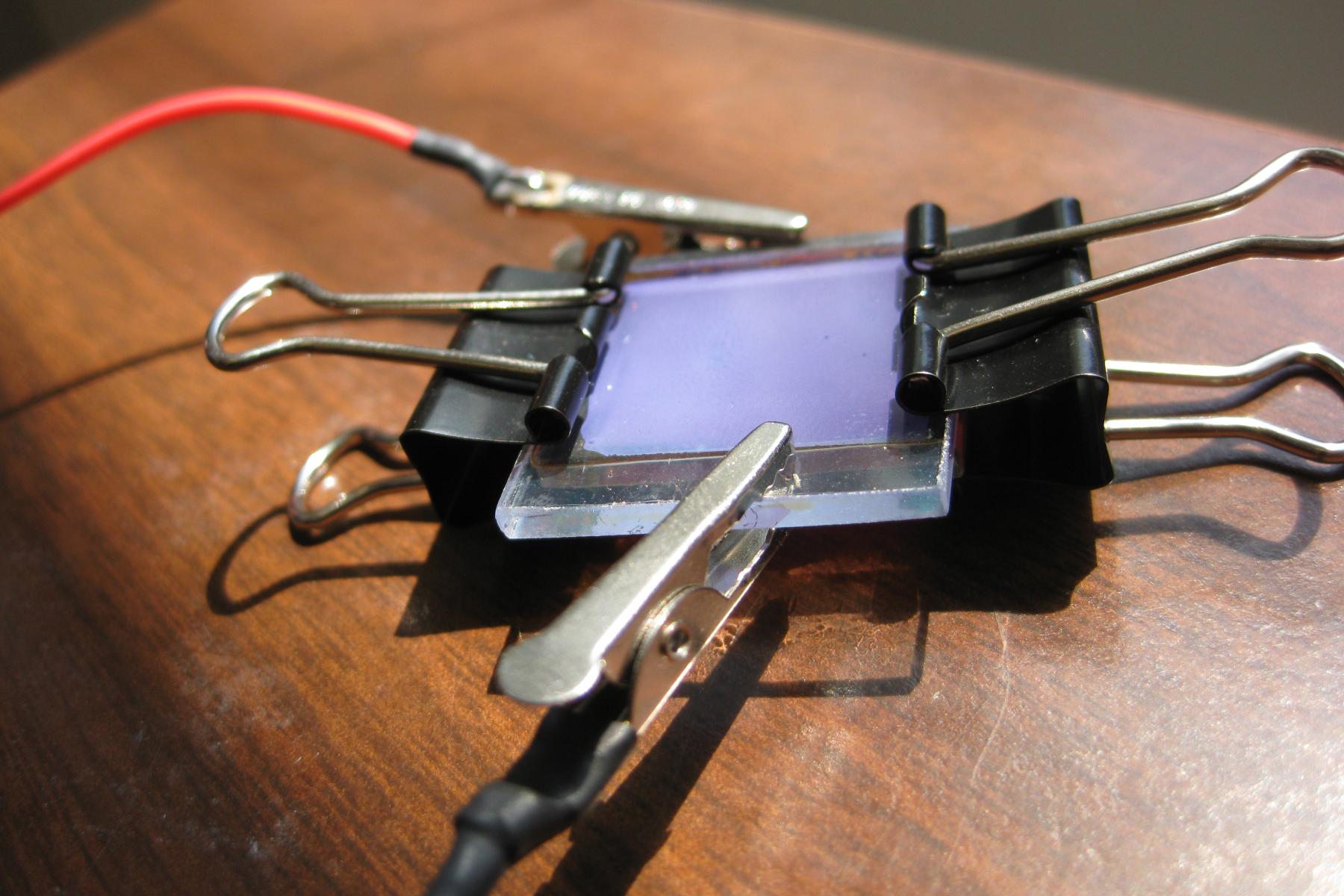DESCRIPTION
Dye Sensitized (Raspberry Juice)Solar Cells is a hands-on activity adapted for classroom by UW MRSEC. This solar cell was invented by Michael Grätzel and Brian O'Regan at the École Polytechnique Fédérale de Lausanne in 1991. They are also known as Grätzel cells. In this activity students build a dye-sensitized solar cell using nanocrystalline titanium dioxide and raspberry juice. They then test the response of these solar cells to light (overhead projector or sun light). They also explore the effects of different 'dyes' on the performance of the solar cell.
DESCRIPTION
Dye Sensitized (Raspberry Juice)Solar Cells is a hands-on activity adapted for classroom by UW MRSEC. This solar cell was invented by Michael Grätzel and Brian O'Regan at the École Polytechnique Fédérale de Lausanne in 1991. They are also known as Grätzel cells. In this activity students build a dye-sensitized solar cell using nanocrystalline titanium dioxide and raspberry juice. They then test the response of these solar cells to light (overhead projector or sun light). They also explore the effects of different 'dyes' on the performance of the solar cell.
OBJECTIVES
NANO CONTENT MAP
Scientists and engineers have formed the interdisciplinary field of nanotechnology by investigating properties and manipulating matter at the nanoscale.
Nanoscience, nanotechnology, and nanoengineering lead to new knowledge and innovations that weren't possible before.
Credits
This linked product was created by another institution (not by the NISE Network). Contact owning institution regarding rights and permissions.

